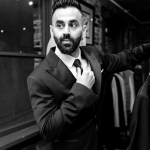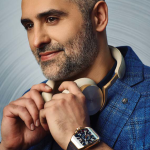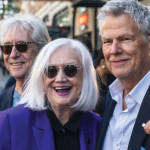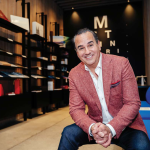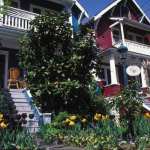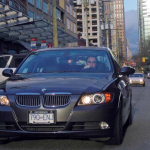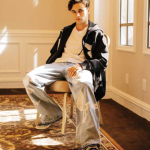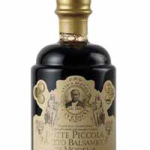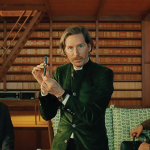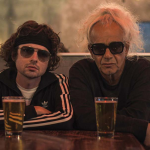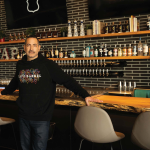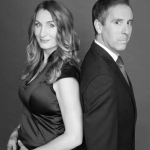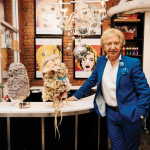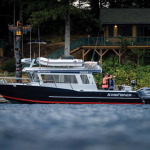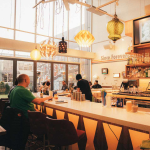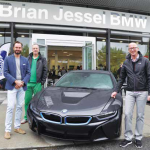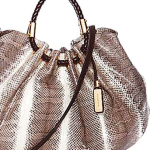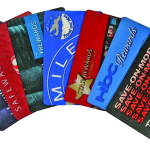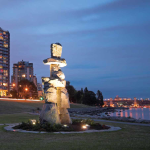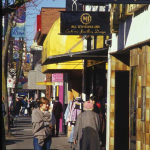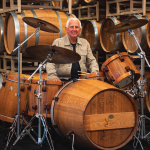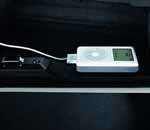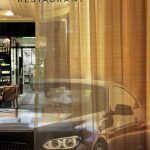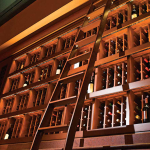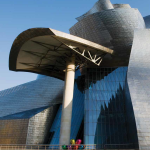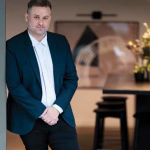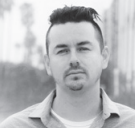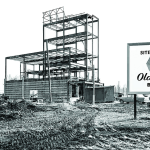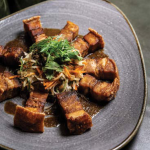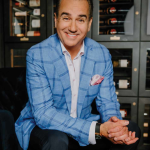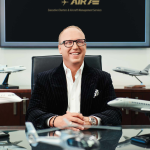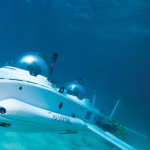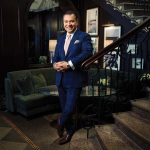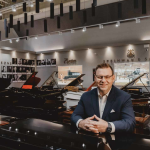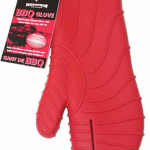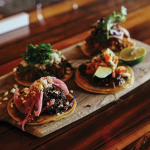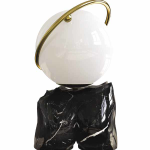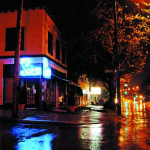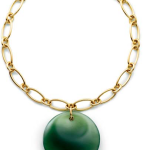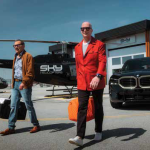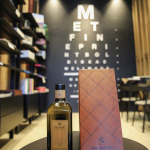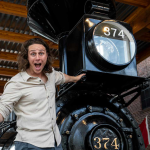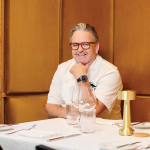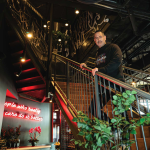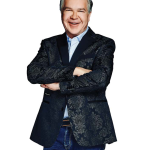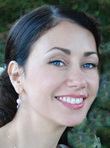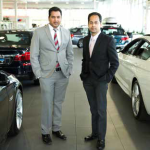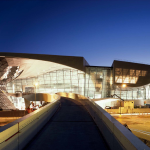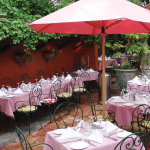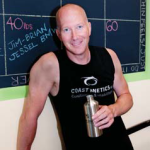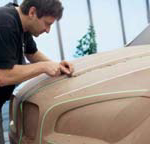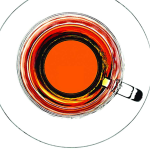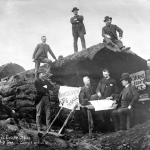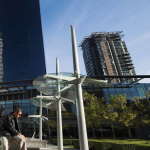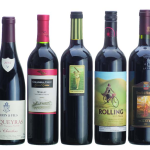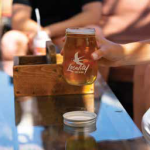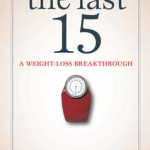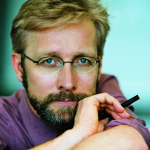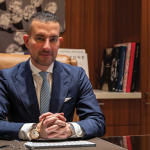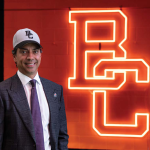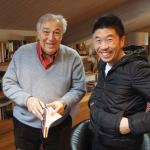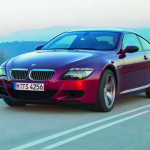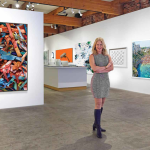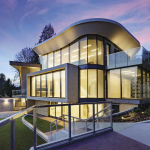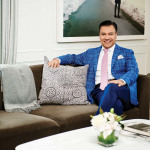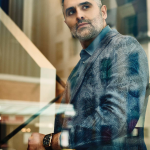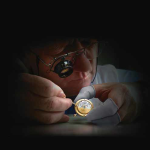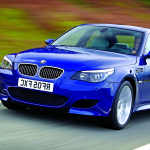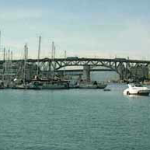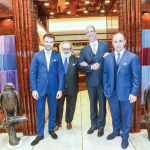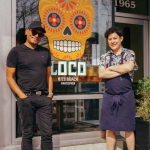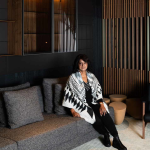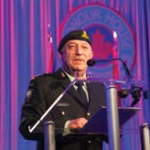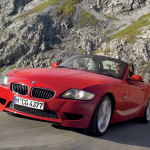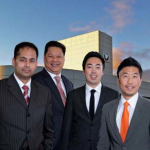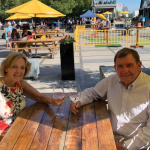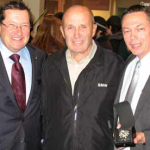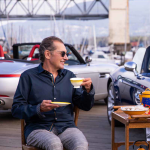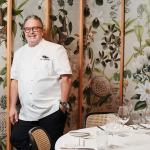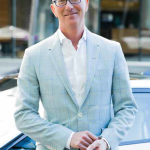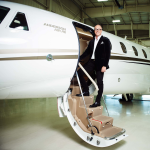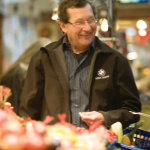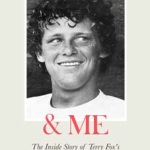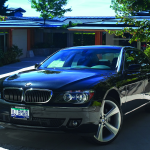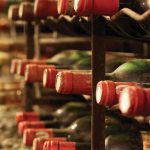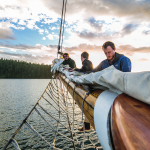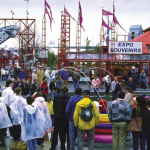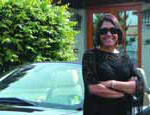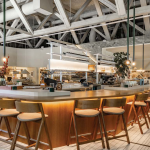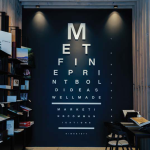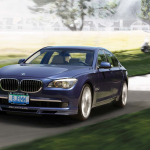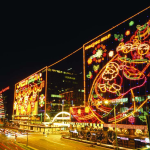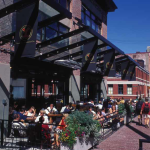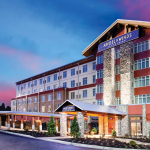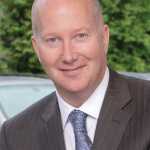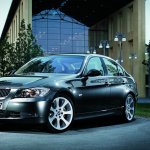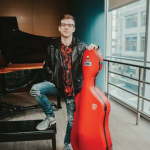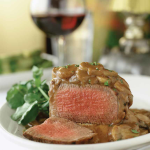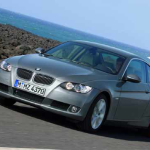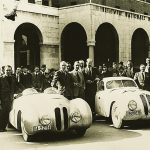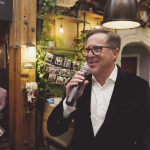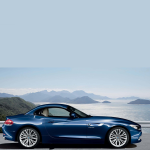Stories to fuel your mind
Industry Leaders ~ 20 Years of Accomplishments
Story by Sue Dritmanis
If you had a bad knee, he’d be your first choice of orthopedic surgeons to fix it. If you support private clinics and want to wage a vigorous debate on the Canadian health care system, he’d be your team’s most powerful speaker. But medicine and politics aside, you definitely don’t want Dr. Brian Day as your golf partner.

DR. BRIAN DAY
“I used to play a lot of tennis,” he says, “My wife, Nina Bland, was the 1981 Canadian national tennis champion.” But in recent years the Days have turned their sporting attentions to golf. As a game but nevertheless novice player, Day entered his first tournament in 2004 at the par-70 Shaugnessy Golf and Country Club, “and my score card read 8, 8, 7…” he recalls, laughing. That is, until he teed off at the 12th hole and sunk a hole in-one. His prize: a shiny new Harley Davidson motorcycle.
Day’s working-class English background (he grew up in the rough and-tumble Toxteth district of Liverpool) would hardly have seemed to prepare him for corporate golf tournaments or a distinguished medical career. In fact, according to a 2002 Vancouver Sun profile, he was the only student in his elementary school class who attended university. But this same curly-headed youth who watched Manchester United legends George Best, Denis Law and Bobby Charlton tear up the soccer pitch, and who heard The Beatles play their earliest gigs at The Cavern, was destined for rather remarkable things.
He earned his medical degree in 1970 at the University of Manchester, and completed his internships there and in London, at Hammersmith. After trauma fellowships in Switzerland and the U.S., he brought his orthopedic surgery skills to Vancouver, and in the 1980s became an associate professor in the Faculty of Medicine at UBC, dividing his time between teaching, research and private practice. Since graduating from medical school, Day has published a wealth of material detailing his findings in the fast-changing fields of orthopedics, arthroscopic surgery and sports medicine.
His achievements led to a term as president of the prestigious Arthroscopy Association of North America, among other board appointments. Most importantly, and much to the relief of joint-pain sufferers across the country, he was a tireless and ultimately successful campaigner to introduce the less-invasive techniques of arthroscopic joint surgery in Canada.
Day acknowledges that he has treated “some really interesting people: film stars, athletes, politicians,” and has been invited to teach and lecture to surgeons around the world, including the medical faculties at Yale, Cambridge and McGill universities. On one such visit to Cuba in 2004 he spent six and a half hours sitting on a sofa, conversing with Cuban leader Fidel Castro. “He’s a great talker,” Day reports, by way of understatement.
“There was somebody to translate, and we sat there from 11:30 p.m. to 6 a.m.” The Vancouver surgeon is also an outspoken proponent of private health care. In 1997, in response to the utter frustration he and his fellow surgeons were experiencing “We had 400 to 500 patients each on our waiting lists, and only five to six hours of surgery a week” he opened the Cambie Surgery Centre. It was the first private hospital of its type in Canada, and it specializes in day surgeries to repair aching knees, shoulders
It’s no wonder he’s preferred BMWs ever since; as this talented orthopedic surgeon will attest, German engineering is hard to beat.
and hips; 95 percent of its patients have third-party insurance for their operations and less than five percent pay out of their own pockets, which should correct misconceptions that private health care is only for the rich. Day’s mission to improve patient access to the system also inspired the creation of a Specialist Referral Clinic, which allows people to see a specialist without first getting a referral from a family physician.
Whether or not Day wins his bid to become president of the Canadian Medical Association (election results will be announced in mid-February), his voice will continue to be heard on B.C. health care issues. He agrees that he has achieved his goals with the Cambie Surgery Centre, “in fact, we’re looking at other opportunities to expand the concept. Ontario doesn’t have anything like this, for example.”
And whereas 20 years ago, when his orthopedic research concentrated on what could be done to improve joint function (“the Germans, interestingly enough, were pioneers in developing the instrumentation”), current research points to a better, bolder outcome. “There’s going to be more curative surgeries,” Day predicts. “More biological repair, grafts and transplants.”
And you’ll still hear him cheering from the sidelines of his children’s soccer games; Day has four children aged 10 and under with Dr. Nina Bland, a family physician, including a set of twins, plus two sons from his first marriage. Those boys may be old enough to remember and still tease their father about his ill-fated affair with a vintage Jaguar convertible he purchased years ago.
“The day I bought it, I invited friends over to take a drive and the thing broke down. They all waved as it was towed away.” It’s no wonder he’s preferred BMWs ever since; as this talented orthopedic surgeon will attest, German engineering is hard to beat.
Sponsored Ads
His entrée into the food service industry, “if you can call refilling the salad bar a job,” was as a seven-year-old, helping out in his parents’ restaurant in New Jersey. As a teenager, a few years after his widowed mom brought her family home to North Vancouver, Harry Kambolis graduated to bus-boy duties at Canyon Gardens off Capilano Road, a location familiar to many a North Shore baby boomer.
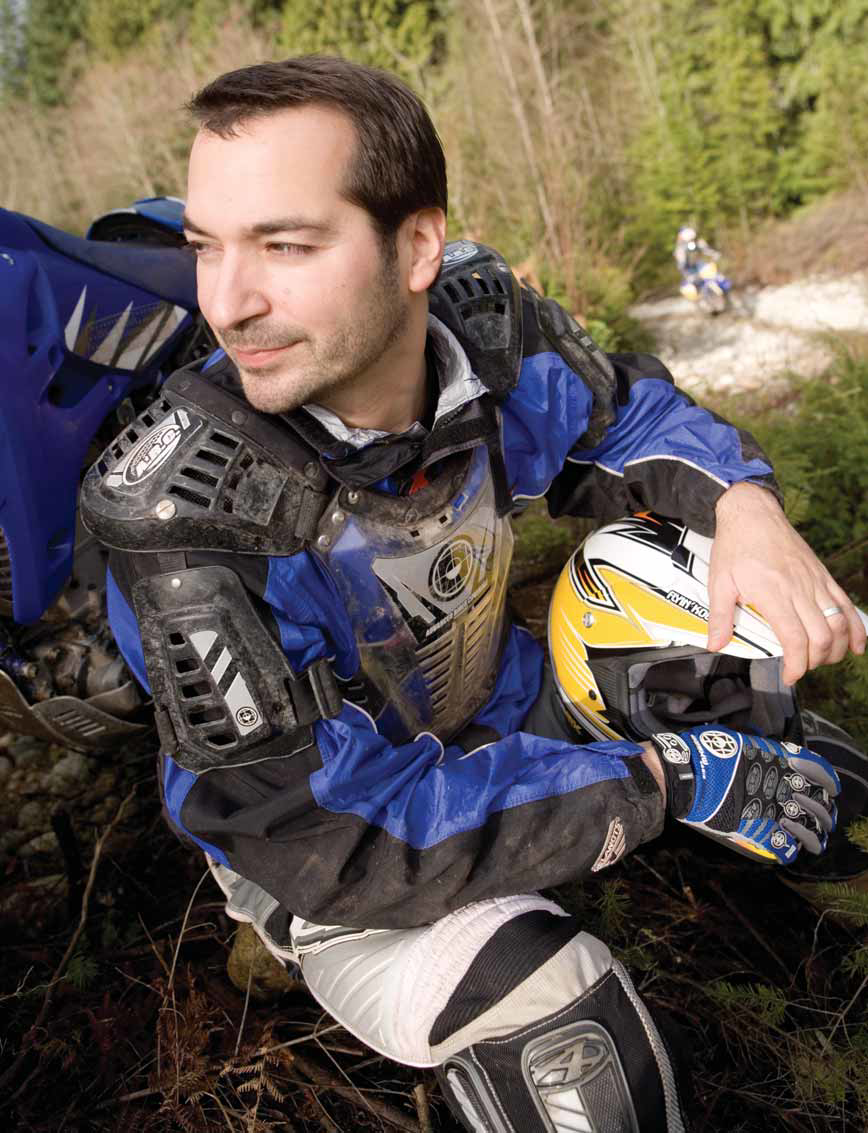
HARRY KAMBOLIS
In its heyday, Capilano Gardens was a popular venue for grad parties and wedding receptions, and owner Terry Nikolopolous, Harry’s uncle, was a constant, smiling presence. The call of the restaurant biz was strong, and at the age of 21 SFU student Kambolis shelved his biology textbooks, came down from the mountain and assumed management of a new Denman Street restaurant his mother Georgia and step-dad Joe had mortgaged their own home to finance.
Raincity Grill became a runaway hit with food critics and the dining public. Its warm, inviting interior, open kitchen, emphasis on fresh, seasonal B.C. ingredients paired with Pacific Northwest wines, not to mention its views of English Bay all contributed to the restaurant’s early success. The introduction of seasonal tasting menus designed specifically to showcase a B.C. cheesemaker, for example, or a grower of heirloom tomatoes, created a buzz not just for the restaurant and its talented chefs but for the previously unheralded producers themselves.
Demand for locally raised meat, poultry and seafood, and for B.C.-grown produce, jumped exponentially. “Twenty years ago,” Kambolis observes, “restaurants were more conventional and offered basic cooking. People paid more were willing and even expected to pay more if the ingredients came from far away. Like asparagus flown in from California. But then a few people started using local resources, and now we’ve moved on from flying and trucking our ingredients in. Now we pay more for local products,” with the happy result that quality and creativity on the plate have never been better.
At Kambolis’s restaurants, anyway. When this wunderkind was still in his 20s, with full tables turning over nightly at Raincity, he opened his second Vancouver restaurant, C, on the waterfront directly overlooking False Creek. The concept: very fresh seafood, served in very imaginative ways. “That was Harry’s idea,” his mother explained in a 1999 North Shore News feature. “He always said Vancouver didn’t have anything interesting in seafood.” Chef Robert Clark’s menus were, and continue to be, head spinningly inventive, proof that Kambolis is a restaurant owner who is unafraid to let his key people follow their muse.
Clark’s vertical bento tasting box includes lobster sunomono and ponzu jelly. He pairs a seared Kagan Bay scallop with a crisp pork shoulder terrine, a Nordic Spirit sablefish collar with a “hazelnut bubble,” and glazes Pacific sardines in birch syrup. His octopus bacon is legendary, made from a confit of octopus tentacles that are later sliced to look like bacon. In 2004 C Restaurant launched its own Contemporary Ocean line of products which now includes smoked salmon, flavoured sea salts and sea salt crackers.
The calm exterior belies a taste for off-road excitement; Kambolis is an avid dirt-biker and skier, and drives a powerful, 500-hp BMW M5.
Both Clark and Kambolis have made it their personal mission to educate the public on “sustainable seafood” and the role restaurants and consumers must play to ensure that endangered fish and shellfish species survive. “We spend a lot of time to access our fish products,” Kambolis says. “All the best products are kept back for export. The best halibut, for example, gets shipped away because those countries are willing to pay the best price. It’s highly competitive.”
Challenges like these clearly haven’t dimmed his enthusiasm for the industry. Even as C Restaurant continued to win awards, earn press coverage near and far and dominate Vancouver’s top 10 lists, Kambolis was plotting yet another waterfront start-up. Nu, which opened last year only a few steps away from C, is more affordable than its sister restaurants but features the equally creative cooking of Chef Robert Belcham.
Crispy fried oysters arrive with a pipette of beer; liquid cheddar-filled crackers come with crisp bacon; duck confit gets a tangy hit from fresh rhubarb. Vancouver Sun restaurant critic Mia Stainsby began her review earlier this year with a sense of relief: “Thank you Nu, for making life easy. You are the best new restaurant of 2005. No question.” General manager and good friend Leonard Nakonechny sums up what makes Harry Kambolis tick: “His entrepreneurial spirit is amazing and he’s very down-to-earth. He has a keen eye when hiring people.
He allows people to make mistakes and improve. And I’ve never seen him freak out. He always comes in very calm, he’s always in the same mood.” The calm exterior belies a taste for off-road excitement; Kambolis is an avid dirt-biker and skier, and drives a powerful, 500-hp BMW M5. “It’s a nice, clean car,” he says. “A really fun car to drive.” With two sons, aged seven and two, you can bet the youthful Kambolis will be looking for ways to keep several steps ahead of his boisterous boys in the years to come. In terms of the restaurant business, he’s already leading the pack.
There’s something about the modern European design sensibility that resonates deeply with retailer Ross Bonetti. Both his home and his 9,500-square-foot LivingSpace showroom were designed by Vancouver’s award-winning modernist architect team David Battersby and Heather Howatt.

ROSS BONETTI
He and wife Melissa furnished their West Vancouver home with the same striking, clean-lined designer pieces that he imports and sells at LivingSpace. (Not surprisingly, the property won Best Design in Western Living magazine’s 2005 residential design awards.) And his passport is well-worn thanks to regular scouting trips to Milan, Paris and Cologne. If there’s a smart, marketable, modern designer of furniture, lighting or home accessories in one of those cities whom Bonetti hasn’t heard of, chances are he (or she) isn’t worth mentioning.
Bonetti was raised in retail and spent hours in the family’s appliance store as a boy, absorbing the sales talk and that first rule of business, customer service. “I had a great interest in design and was always aware of new things on the market,” he recalls, “whether it was a new piece of high-tech hockey equipment that I had to have, or the latest Danish piece of furniture that my mother had purchased.” As Bonetti points out, “I now have the perfect job for a self-confessed design junkie!”
He opened his first store in 1988 on Marine Drive in North Vancouver and since then LivingSpace has grown to become one of the leading design stores on the continent, carrying such influential European lines as Minotti, Flou Italia, Ligne Roset and Alessi. In 2001 he opened a second store in Houston, Texas. “I think the biggest change in this industry in the past 20 years has been the boom in Vancouver real estate in the high-end condo market, and the move to a more urban lifestyle,” Bonetti observes.
“Vancouver has attracted people from around the world, and these newcomers make up a large part of our clientele. Our clients are more design- and quality conscious than they were, and there is definitely a move to modernism.” LivingSpace’s 2001 relocation from North Vancouver to the old Jantzen swimwear factory at Main and Kingsway was, arguably, a risky move. Unlike Yaletown, for example, it wasn’t an area of the city considered to be trend-worthy. But Bonetti needed more space, at an affordable price, and predicted correctly that the neighbourhood was ripe for gentrification.
The building’s revamped interior, with its skylights, open beams, high ceilings and fabric partitions, gives centre stage to the showroom’s bold shapes: a clear acrylic Ghost Chair, a height-adjustable, aluminum-lacquered coffee table and an ingenious, space-saving three way sofa bed (sofa, chaise or bed), among other items. Many of the lines are selected based on how easily the furniture can be incorporated into condos and lofts where space is at a premium.
Some cleverly do double duty as tables and storage spaces, or can be manipulated and reassembled to suit the owner’s tastes or entertaining needs. Separate from the room groupings is a “designers gallery” featuring displays which explain who’s who in the world of high-end European furniture, lighting and accessories. They’re all household names in Europe
“I had a great interest in design and was always aware of new things on the market.”
(Italian architect Rodolfo Dordoni is one) but North Americans are gradually catching on. Now that LivingSpace’s neighbours include hip restaurant Monsoon and upscale hardware store Cantu, a revitalization is well underway beyond LivingSpace’s doors too. “I think Ross had a hand in it,” design journalist and former editor of Western Living Carolann Rule says. “He had the foresight to hire Battersby and Howat, and it was a brilliant move to bring high style to a marginalized area.
He’s a good businessman, very approachable, and he loves and lives modern design.” Networking is a particular strength of Bonetti’s. He likes to socialize, he’s eager to share what he knows and, by all accounts, he has worked hard to give European designers the kind of profile they enjoy at home. LivingSpace often hosts events at which clients (and especially local interior designers) can view the latest and best furniture lines up close and meet the Euro movers-and-shakers responsible for them.
“I watch people line up for young designers’ autographs at the European shows and wonder why that doesn’t happen at home,” Bonetti says. Which is the reason why Living Space’s website (www.livingspace.com) features links to all the top design house sites, and it was also the impetus in 2001 for Bonetti to become involved with the Emily Carr Institute in establishing a scholarship for a worthy industrial design student. “Who knows?” Bonetti says.
“Maybe we have the next Starck in our midst.” In the meantime, between trips to Italy and elsewhere, Bonetti keeps busy with his growing family (three kids, Quinn, Tavia and Matteo), wife Melissa and his adventure racing. His Team Road Kill, a co-ed group of amateur athletes aged 31 to 46 (Bonetti is the senior member) took a very respectable fourth-place finish in a 12-hour event held last July in Breckenridge, Colorado. The course included mountain biking, kayaking, trekking and orienteering. After such a gruelling race, a good rest on a beautifully designed piece of modern European furniture is well deserved.
Sponsored Ads
When the sun is shining, you’re just as likely to see Vancouver city councillor Peter Ladner zipping around town on his ancient “stump-jumper” bike as you are to see him in his car. And as a cyclist, he certainly knows how to make a fashion statement.

PETER LADNER
“My signature is that I bike in my work clothes,” he explains. “I’m in my jacket and tie with a red bike jacket over top. And my mother-in-law gave me a bright yellow cover for my bike helmet, so I wear that now, too.” In his second term of office at City Hall, with a successful career as a journalist and magazine publisher behind him, it’s Ladner’s visibility as politician that matters as much to him as his road-worthiness.
Last summer he sold most of his shares in Business In Vancouver, the weekly business newspaper he co-founded in 1989. “I’m still officially vice-president [of the Business In Vancouver Media Group], and I write a column for the paper every two weeks,” he points out. But his list of civic duties is making increasing demands on his time. He is a member of two standing committees and chair of a third, City Services and Budgets.
He’s a director of the Greater Vancouver Regional District (GVRD) and was appointed to both the Vancouver Economic Development Commission and the city’s Civic Development Corporation. And his recent initiative, to explore how the city might provide free wireless Internet access in selected areas, generated lots of media interest. A fourth-generation British Columbian (the town of Ladner was named for his great-great-grandfather), raised in Shaugnessy and educated at Shawnigan Lake private boarding school and UBC, he is following in his grandfather’s footsteps.
Perhaps not ideologically, since Leon Ladner served as a Conservative MP for Vancouver South from 1921 to 1930 and his grandson belongs to the Non-Partisan Association, but surely in spirit. “I’m quite enjoying municipal politics,” Ladner says. “We make a lot of decisions on issues that will shape the world my children will live in.” Ladner’s mid-life career shift initially had people wondering where on the political spectrum he would settle.
In the mid-70s, among other things, he worked as an executive assistant for NDP deputy attorney general David Vickers, backpacked through Europe and Asia with his wife, Erica Warrington, and became a “back-to-the-lander,” building a house and planting an orchard and garden on four acres of land on the outskirts of Duncan, B.C. He was later named editor of Victoria’s alternative weekly, Monday Magazine.
And he and Erica started a family; their four children now range in age from 16 to 25. Moving to Vancouver in 1986, his original intention was to become editor of a similar, left-of-centre publication to be introduced as a direct competitor to local publisher Dan McLeod’s well-established, highly profitable Georgia Straight. The plan was shelved, and Ladner then convinced his former Victoria partners to invest in a business publication titled Vancouver’s Business Report.
He took ownership of the digest in 1988, sold it not long after and used the proceeds to launch a new project, Business In Vancouver. As the paper grew in size and circulation, Ladner earned a reputation for providing fair and balanced coverage of the local business community.
“We make a lot of decisions on issues that will shape the world my children will live in.”
It was an era of unprecedented change for the city’s publishing industry. “On the business side, it has consolidated. There are far fewer owners,” he observes. “On the product side, it’s been transformed by the new technologies. Every medium is engaged electronically now.” And so, after 12 years at the helm of his weekly business paper, rubbing shoulders with the city’s top entrepreneurs and savviest corporate executives, Ladner evolved into that characteristically West Coast hybrid a pro-environment free-enterpriser, one arm hugging a tree, one hand clutching a calculator.
Judy Bishop is Ladner’s ski buddy, his campaign fundraiser and a longtime corporate and market strategy expert in the B.C. high-tech industry. Of his move into politics she says, “It’s not a stretch.” He came from a well-educated family and had a privileged upbringing, “But he thought, ‘Is there more?’” Bishop explains. “He genuinely seeks to understand people, and to fill in any gaps in his knowledge. He has real clarity and he’s very focused.
Except he’s notorious for losing his keys!” Tracy Tjaden, a former BIV staff writer and now acting editor of BC Business magazine, recalls her boss as “a fanatical bike commuter” and someone who is “well connected, and because he has always maintained his integrity, people are not afraid to stand behind him. I definitely think we’ll hear a lot more from Peter Ladner in the future.” The city councillor himself remains circumspect.
When his second term ends in 2008, he says he intends to “assess my options.” He doesn’t rule out a run for the mayor’s office. But in the short term there is much he wants to accomplish, fulfilling his campaign promises to make Vancouver “an even greater city” by making it more sustainable (cleaner, less wasteful, more transportation options), by encouraging economic growth and by “having more fun.” As he insists, “the city that plays together stays together.”


















